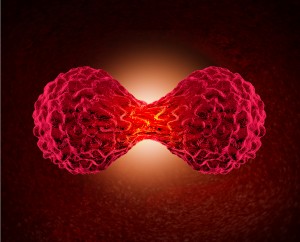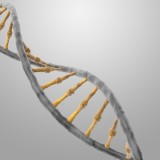New Retinoblastoma Research May Change Cancer Diagnosis and Treatment
Retinoblastoma protein RB1 is a gene that has been linked to cancer since early research breakthroughs in the 1970s. Now there are new findings that show more details about RB1 and other RB proteins’ central role in controlling cell proliferation (increase) and cell death. Additionally, new findings review the effects of RB loss and protein modifications.
While there is still much work to be done before these new findings can be effectively applied, they may change the way that retinoblastoma and other cancers are diagnosed and treated.
History of RB1 in Tumor Research
The protein retinoblastoma RB1 is named after the eye cancer retinoblastoma and was the first tumor suppressor gene to be identified. The initial findings in the 70s were instrumental in the hypothesis by Alfred K. Knudson that cancer occurs as a result of multiple mutations in specific genes.
The protein has been used to help regulate cell cycles and stop cell proliferation, but there have been different issues with actually using the protein for these purposes. It may be possible to work through these issues with the new findings.
Issues with RB1’s Role in Treatment
 RB1 belongs to a family of proteins that are related to cell proliferation. Some of these proteins share responsibilities in the functions related to cell generation and proliferation, overlapping and working together to complete functions.
RB1 belongs to a family of proteins that are related to cell proliferation. Some of these proteins share responsibilities in the functions related to cell generation and proliferation, overlapping and working together to complete functions.
Unfortunately, this makes it somewhat difficult to single out one specific gene’s role in proliferation in order to use that knowledge for treatment or diagnosis of cancers. There is some hope that the new findings will help to further break down this relationship so that RB1 can be used to stop cancerous cells from regenerating.
RB1 and Apoptosis
RB1 can be used in apoptosis, perhaps with greater effectiveness now because of the new findings. Apoptosis is controlled cell death that is used in cancer research and treatment. The issue that has been found with apoptosis in the past is that cancer cells are better than ordinary cells at avoiding it.
RB1 may be useful in getting cancer cells to die through apoptosis. While this has been suspected in the past, the new findings shed more light into how this may actually work in practice.
More Work to Be Done
While the findings have been enlightening for researchers and scientists that work in the oncology field, there is still much work that must be done before the findings will translate to real changes in the way that cancer is diagnosed and treated.
Every breakthrough has the potential to improve the prognosis for cancer patients and bring us one step closer to a cure, however. By identifying the genes related to cancer and finding out more about the way they work, we may also be able to someday spot cancer markers and prevent the disease from ever gaining a foothold.

















